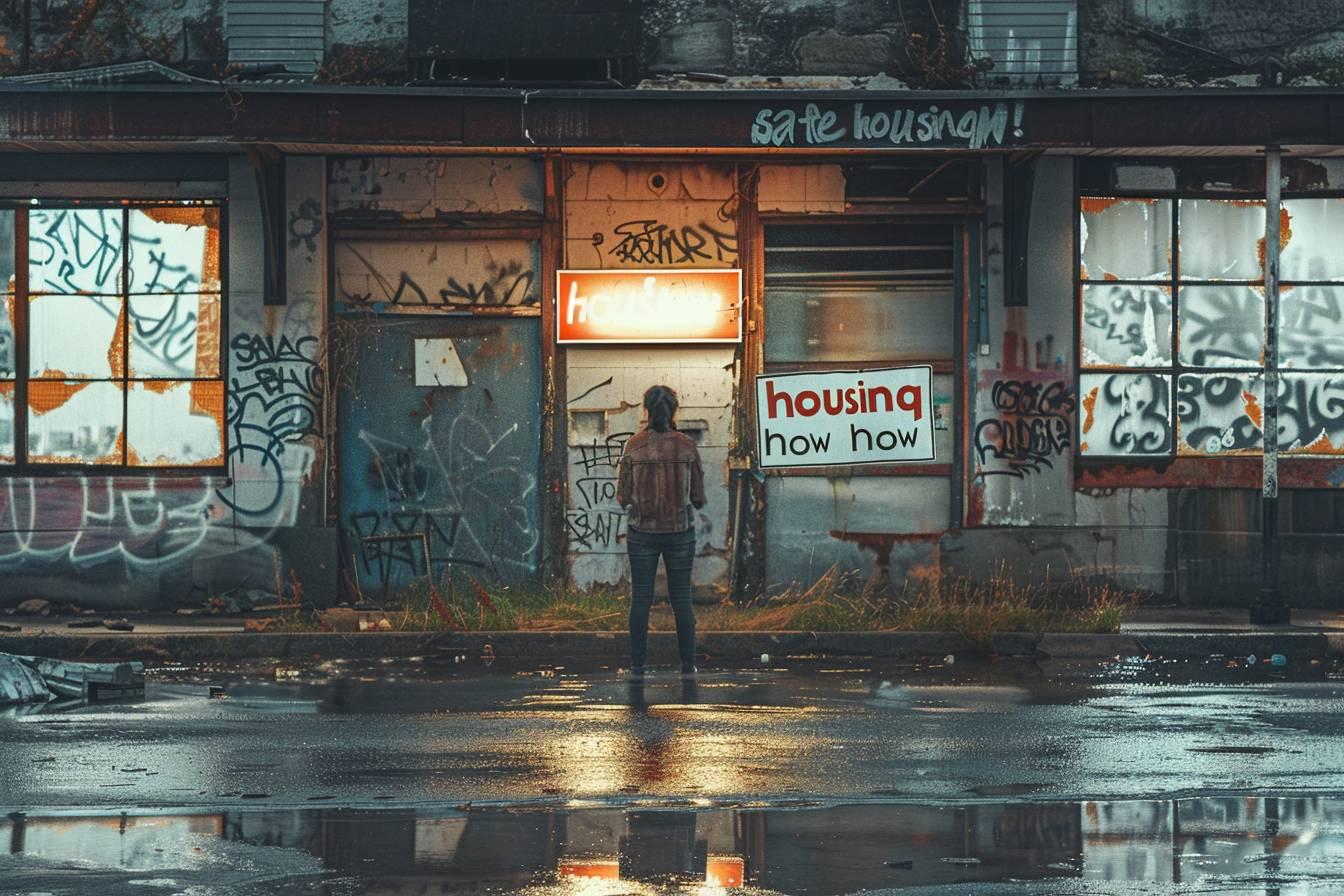Unsafe housing conditions pose serious risks to residents’ health and well-being. Identifying and reporting substandard living spaces is crucial for ensuring safe and habitable environments. This comprehensive guide explores the key indicators of unsafe housing, steps to report violations, and resources available to tenants facing these challenging situations.
Recognizing signs of substandard housing
Identifying unsafe living conditions is the first step in addressing housing issues. Substandard housing often exhibits various telltale signs that tenants should be aware of. These indicators can range from visible structural problems to less obvious health hazards.
Some common signs of unsafe housing include :
- Visible mold or mildew growth
- Peeling paint or chipping lead-based paint
- Faulty electrical wiring or exposed wires
- Leaking pipes or persistent water damage
- Inadequate heating or cooling systems
- Pest infestations (rodents, cockroaches, bed bugs)
- Structural issues like sagging floors or ceilings
- Broken windows or doors that don’t lock properly
It’s important to note that not all unsafe conditions are immediately visible. Some hazards, such as carbon monoxide leaks or asbestos contamination, may require professional inspection to detect. Tenants should remain vigilant and trust their instincts if they suspect potential dangers in their living spaces.
The World Health Organization (WHO) defines adequate housing as more than just four walls and a roof. It encompasses factors like security, privacy, space, lighting, ventilation, and basic infrastructure. When these elements are compromised, living conditions can quickly become substandard and pose health risks to occupants.
Tenants should be particularly cautious of situations where landlords consistently neglect maintenance requests or make temporary fixes that don’t address underlying issues. These patterns often indicate a broader problem of substandard housing management and may require more serious intervention.
Health implications of unsafe housing
Living in substandard conditions can have severe consequences for residents’ physical and mental well-being. Unsafe housing is directly linked to various health issues, some of which may have long-lasting effects, especially on vulnerable populations like children and the elderly.
The table below outlines some common health problems associated with specific unsafe housing conditions :
| Unsafe Condition | Potential Health Impact |
|---|---|
| Mold and dampness | Respiratory issues, allergies, asthma exacerbation |
| Lead-based paint | Developmental delays, cognitive impairment, anemia |
| Pest infestations | Allergies, asthma, vector-borne diseases |
| Poor ventilation | Indoor air pollution, respiratory problems |
| Structural hazards | Injuries from falls, cuts, or collapses |
The Centers for Disease Control and Prevention (CDC) reports that substandard housing conditions contribute to numerous health disparities in urban areas. These issues disproportionately affect low-income communities and minority populations, exacerbating existing social inequalities.
Mental health is another critical aspect affected by unsafe living conditions. The stress of dealing with persistent housing problems, fear of eviction, or concerns about personal safety can lead to anxiety, depression, and other psychological issues. Children growing up in substandard housing may experience difficulties in school performance and social development.
Recognizing these health implications underscores the urgency of addressing unsafe housing conditions promptly. Tenants should prioritize their well-being and take action when faced with substandard living spaces, utilizing available resources and support systems to advocate for their right to safe and healthy housing.

Steps to report unsafe housing conditions
When faced with substandard living conditions, tenants have several options for reporting and seeking resolution. Taking appropriate action is crucial for protecting your rights and ensuring a safe living environment. Follow these steps to effectively report unsafe housing conditions :
- Document the issues : Take clear photos and videos of the problems. Keep a detailed log of when issues occurred and any communication with your landlord.
- Notify your landlord in writing : Send a formal letter or email describing the unsafe conditions and requesting repairs. Include a reasonable timeframe for addressing the issues.
- Contact local housing authorities : If your landlord fails to respond or address the problems, reach out to your city or county’s housing department or code enforcement office.
- File a complaint : Submit an official complaint to the relevant housing authority. Many cities offer online portals or hotlines for reporting substandard housing.
- Request an inspection : Ask the housing authority to conduct an on-site inspection of your living space to document violations.
- Seek legal assistance : If the situation remains unresolved, consult with a tenant rights organization or a housing attorney for guidance on your legal options.
It’s important to maintain clear communication and documentation throughout this process. Keep copies of all correspondence, inspection reports, and other relevant documents. This information can be crucial if legal action becomes necessary.
The U.S. Department of Housing and Urban Development (HUD) provides resources and guidance for tenants dealing with unsafe housing conditions. Their website offers information on tenant rights, fair housing laws, and how to file complaints at the federal level for certain types of housing discrimination.
In some cases, tenants may have the right to withhold rent or exercise « repair and deduct » options if landlords fail to address serious health and safety issues. However, these actions should only be taken after careful consideration and consultation with legal experts, as laws vary by state and locality.
Remember that retaliation by landlords against tenants who report unsafe conditions is illegal in most jurisdictions. If you experience threats, harassment, or attempts at eviction after reporting problems, document these actions and seek immediate legal assistance to protect your rights.
Resources and support for tenants
Dealing with unsafe housing conditions can be overwhelming, but numerous resources are available to support tenants through the process. Accessing these support systems can significantly improve your chances of resolving substandard living situations and advocating for your rights effectively.
Key resources for tenants facing unsafe housing conditions include :
- Local tenant unions or advocacy groups
- Legal aid organizations offering free or low-cost assistance
- Community housing clinics and workshops
- State and federal housing agencies
- Online databases of tenant rights and local housing laws
- Mediation services for landlord-tenant disputes
The National Housing Law Project (NHLP) is a valuable resource that provides comprehensive information on housing rights and policies. Their website offers guides, fact sheets, and legal resources tailored to various housing issues, including substandard conditions.
For immediate assistance, many cities operate housing hotlines where tenants can speak directly with housing specialists. These experts can provide guidance on local regulations, reporting procedures, and available support services.
Building a support network within your community can also be beneficial. Connecting with neighbors who may be experiencing similar issues can lead to collective action and increased leverage when dealing with negligent landlords or property management companies.
In cases of widespread housing issues affecting multiple tenants, consider organizing tenant associations or working with existing community organizations to amplify your voice and push for systemic changes in housing quality standards.
Remember that knowledge is power when it comes to addressing unsafe housing conditions. Stay informed about your rights, local housing codes, and available resources to effectively navigate the challenges of substandard living spaces and work towards securing safe and healthy housing for yourself and your community.

